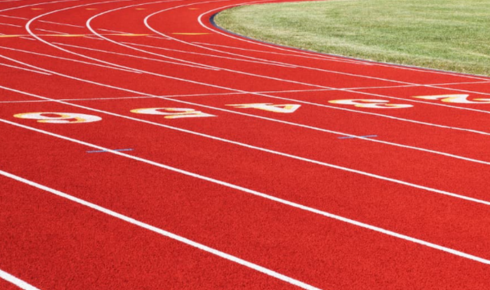
Urban environments in India are rapidly transforming. With limited open areas and rising demand for wellness-focused amenities, compact walking track design has emerged as a creative solution for fitness enthusiasts living in small spaces. From residential societies and rooftop gardens to corporate campuses and schoolyards, space-efficient walking track construction is becoming both a challenge and a necessity.
But designing a walking track in a tight area isn’t about squeezing in a path wherever possible. It involves smart planning, user comfort, and selecting the right walking track flooring that fits the Indian climate and usage levels. In this guide, we’ll explore how to plan an effective, durable, and visually pleasing compact walking track, without compromising on experience or safety.
Understanding the Space: Size Doesn’t Limit Purpose
The first myth to dispel is that walking tracks require large, open grounds. In truth, many successful installations are created on rooftops, alongside buildings, in courtyards, or even along the perimeter of smaller plots. What matters more than size is how the space is used.
Compact walking track layouts can be designed to:
- Loop around existing infrastructure
- Weave through landscape features
- Run in straight stretches with strategic turns
- Integrate fitness stations or shaded rest areas
In schools, even a 200-meter track around a playground adds significant value. In residential societies, a well-designed 300–500-meter loop around the compound offers residents a daily walking routine without leaving the premises.
Defining the Track Layout: Think Function Before Aesthetics
In tight spaces, planning becomes critical. The path should be smooth and continuous, allowing comfortable movement without unnecessary interruptions. Avoid layouts with sharp turns, abrupt stops, or dead ends that break the natural walking rhythm.
Common design patterns include:
- Perimeter tracks: Utilizes the boundary wall of a plot effectively.
- Figure-8 or oval layouts: Great for optimizing movement within medium-sized courtyards.
- Zigzag or linear tracks: Useful for rooftop terraces or narrow parks.
When designing a walking track flooring in compact spaces, ensure the path is at least 1.2 to 1.5 meters wide to accommodate one or two walkers side by side. Adequate turning radii, gentle gradients, and rest zones are essential for safety and comfort.
Choosing the Right Flooring Material
In India’s harsh outdoor conditions, the choice of walking track flooring directly impacts comfort, maintenance, and longevity. Acrylic synthetic systems are among the most reliable and widely used materials for compact tracks.
Why acrylic is ideal:
- Slip-resistant: Essential for safety in small spaces and high foot traffic
- UV-resistant: Maintains color and surface quality under sunlight
- Low maintenance: Requires only occasional cleaning
- Customizable: Available in multiple colors and surface textures
- Durable: Withstands constant use without cracking or chipping
Acrylic flooring is often applied in layered systems over a concrete or asphalt base. It can also include optional cushion layers for added joint comfort—especially useful in areas frequented by senior citizens or children.
Multi-Functional Use: Make Every Square Foot Count
Compact walking track surfaces don’t need to be standalone features. In fact, the best designs often combine fitness, recreation, and aesthetic elements in a single footprint.
Smart integrations include:
- Rooftop fitness zones with walking loops and yoga platforms
- Clubhouse terraces with walkways around seating or garden areas
- School compounds with dual-use sports cum walking paths
- Housing society gardens with flower beds and walking trails
These combinations help maximize utility and justify the construction investment, while also encouraging higher usage by residents or members.
Design Features that Elevate Compact Tracks
Small space doesn’t mean limited experience. A compact track can still offer a refreshing walking environment if designed with thoughtful features:
- Curved edges or landscaped turns to avoid monotony
- LED pathway lights for early morning or evening walkers
- Directional markings or motivational quotes for visual interest
- Benches or shaded spots for resting
- Soft planting zones that improve air quality and ambiance
Such features don’t require large budgets but greatly enhance the sense of space and encourage consistent use.
Addressing Drainage, Safety & Comfort
Rainwater accumulation is a common problem in Indian outdoor spaces, especially when built on rooftops or areas without natural slope. During walking track construction, ensure:
- Proper base slope of at least 1–2% for water runoff
- Non-porous, weather-resistant surface layers like acrylic
- Side gutters or concealed drainage channels in low points
For safety, anti-slip finishes should be included as part of the flooring system. Cushion coating is also advised in tracks built for senior citizens or rehabilitation purposes, as it reduces the impact on joints and bones.
Maintenance Planning for Long-Term Usability
Once installed, a compact walking track becomes a daily-use amenity. To keep it functional and appealing, regular upkeep is essential. Fortunately, acrylic-based outdoor walking track flooring ideas are designed to be low-maintenance.
Best practices include:
- Weekly sweeping or soft mopping to remove dust and leaves
- Annual inspections for surface wear or cracks
- Re-coating every 4–6 years depending on usage
- Touch-up paint for worn-out markings or faded colors
A small maintenance budget ensures your track remains safe, attractive, and usable for years, without needing major repairs.
Budgeting Smartly for Compact Projects
One of the advantages of small-space tracks is cost-efficiency. Since the total area is smaller, material costs are lower, and installation takes less time. For example, using acrylic walking track flooring over a 300-meter loop can provide years of usage with minimal maintenance.
Budget allocations should cover:
- Base preparation (concrete or asphalt)
- Layered acrylic system (primer, resurfacer, cushion, color coats)
- Line marking or decorative designs
- Optional additions like lighting or landscaping
Choose a reliable supplier who offers full-system solutions to ensure compatibility between layers and long-term durability.
Conclusion
Planning a walking track in a compact space doesn’t mean compromising on comfort, safety, or aesthetics. With thoughtful layout design, reliable materials like acrylic, and multi-functional use, even the smallest footprint can deliver maximum wellness value.
As Indian cities continue to urbanize, space-smart walking tracks will become essential. When designed with purpose and executed with quality materials, these tracks create daily fitness opportunities, encourage community interaction, and elevate the value of any property or facility.
If you’re looking to build a walking track in a compact space, acrylic flooring offers the ideal solution. SLT Sports provides certified acrylic systems designed for Indian weather, perfect for residential complexes, parks, schools, and rooftops across the country.



